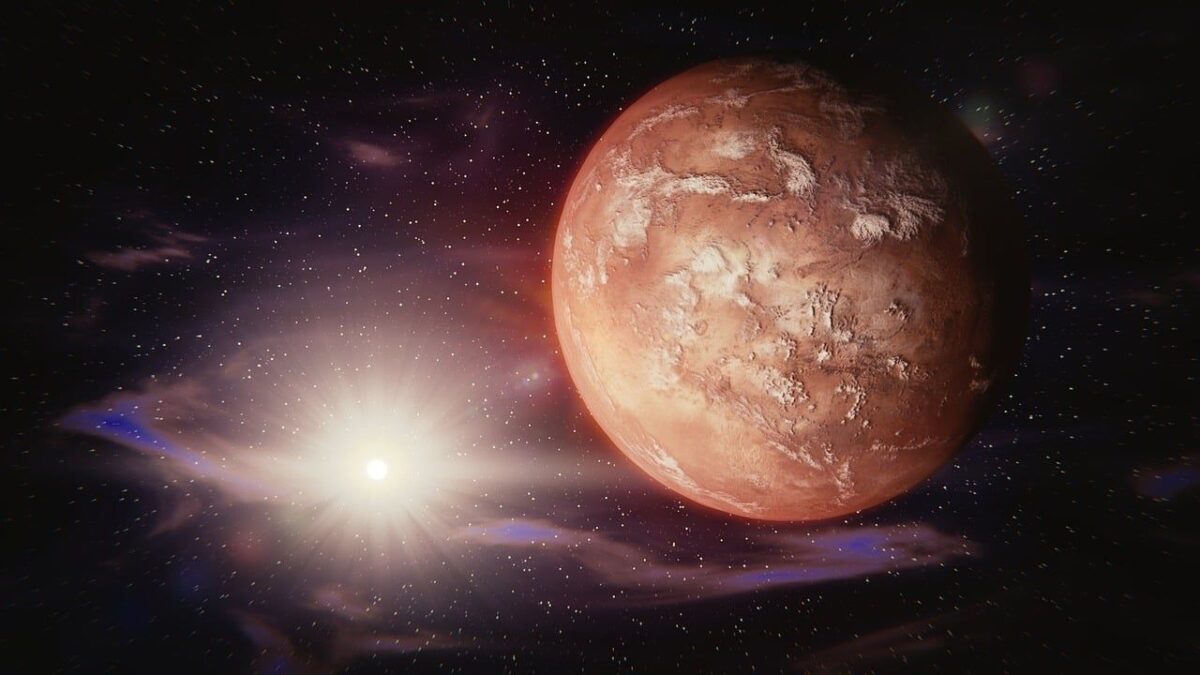
Humans have not yet set foot on Mars. However, over the years meteorites from Mars appear to have reached humans. Pieces of rock were ejected from Mars by violent explosions, traveled through the solar system and ended up on Earth.
Scientists collect these samples from Mars, but they find that one of them has appeared Strange pattern. Most of the samples appear to be rocks that formed on the Red Planet recently. This causes a paradox since it is accepted that the surface of Mars formed long ago. Now a new one Stady It attempts to solve this problem and answer why these meteorites are relatively small.
The paradox of the era of meteorites from Mars
It is possible that the age measurement of rocks from the neighboring planet is largely wrong. Different dating techniques gave different results. This means that scientists are not entirely sure when these rocks formed on Mars.
a A team of scientists from the United States and Britain I found a way to solve this problem. To their great surprise, they found that many of these rocks formed relatively recently, that is, they were only a few hundred million years old. This information can provide clues about how long it takes meteorites to reach Earth and the geological processes that occur on Mars.
“We know from some chemical properties that these meteorites are definitely from Mars.” says the volcanologist Ben Cohen from the University of Glasgow, Who headed the investigation. It continues: “They were ejected from the Red Planet after massive impact events, which formed large craters. However, there are tens of thousands of impact craters on Mars. So we do not know exactly where meteorites come from. One of the best clues we can use to determine the original crater is the age Samples.”
There are approximately 360 samples of meteorites that have reached Earth and been determined to originate from Mars. Among them, about 302 are classified as shergottite, a type of mineral-rich Martian rock that was formed at the high temperatures of volcanic activity.
Since the surface of Mars is full of craters, scientists have calculated that it is very old. If the surface were younger, many of the craters would be obliterated by volcanic flows. Therefore, rocks ejected from the surface of Mars must also be older.
What is the “Sergotite Lifespan Paradox”?
Sergotite dating techniques here on Earth are complex. However, one of the few things we can learn from these rocks is that they are less than 200 million years old. This led to what is known as “The age paradox of sergotite”which has worried scientists for decades.
Scientists have tried to provide different explanations for this paradox. For example, they thought the rocks might have come from a single crater that formed relatively late on Mars. They also believed that the impact event could have heated and crushed the rocks to such an extent that it would have changed their age. However, these theories found an obstacle to the key element of the research: the rocks themselves.
The method used to determine the age of sergotite is based on the decay of radioactive potassium into argon. Since this decay rate produces a known ratio of argon isotopes, scientists can look at this ratio to determine how long radioactive decay occurred and thus date the rock sample.
The problem is that on Earth, we can easily account for the different sources of argon that might enter the sample. However, for sergotite, which started out on a completely different planet and spent time in space, the matter is more complicated. There are five possible argon sources for sergotite from Mars compared to three for terrestrial rocks.
The solution provided by the new study
To compensate for this, Ben-Cohen and his colleagues developed a method to correct for argon contamination from Earth and space. Once scientists applied the method, they found that the age of the meteorites was actually young.
They dated seven samples of sergotite and found that their ages ranged between… 161 to 540 million years ago. Researchers say this may have been caused by repeated bombardment of Mars that broke up the ancient surface and exposed younger rocks below that were replaced by volcanic activity. So these younger rocks will likely be extracted and flung into space.
Volcanic activity on Mars may still be ongoing today and Mars may be subject to constant bombardment. the Scientists It is estimated that about 200 impacts occur each year resulting in craters larger than 4 meters in diameter. So perhaps it’s not surprising that younger rocks are sometimes flung toward Earth.
source: FOXreport.gr

“Total alcohol fanatic. Coffee junkie. Amateur twitter evangelist. Wannabe zombie enthusiast.”





More Stories
Longevity: A powerful practice upended – what a new study reveals
The most distant black hole merger was discovered by James Webb
Breaking news: Ubisoft clarifies the position of Assassin’s Creed Shadows after complaints